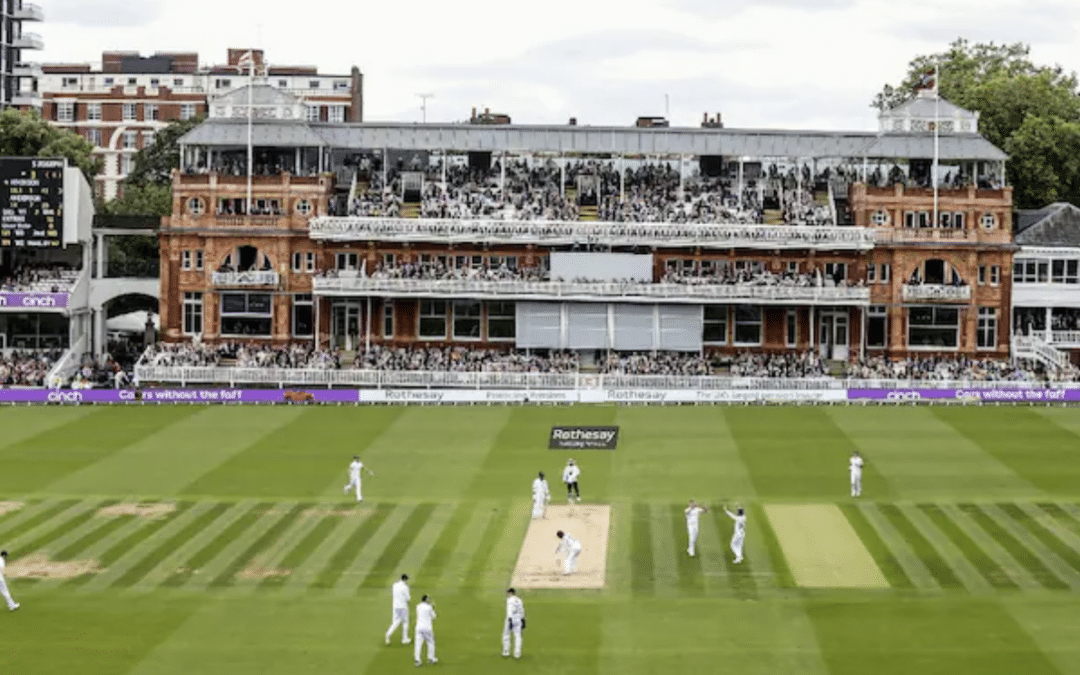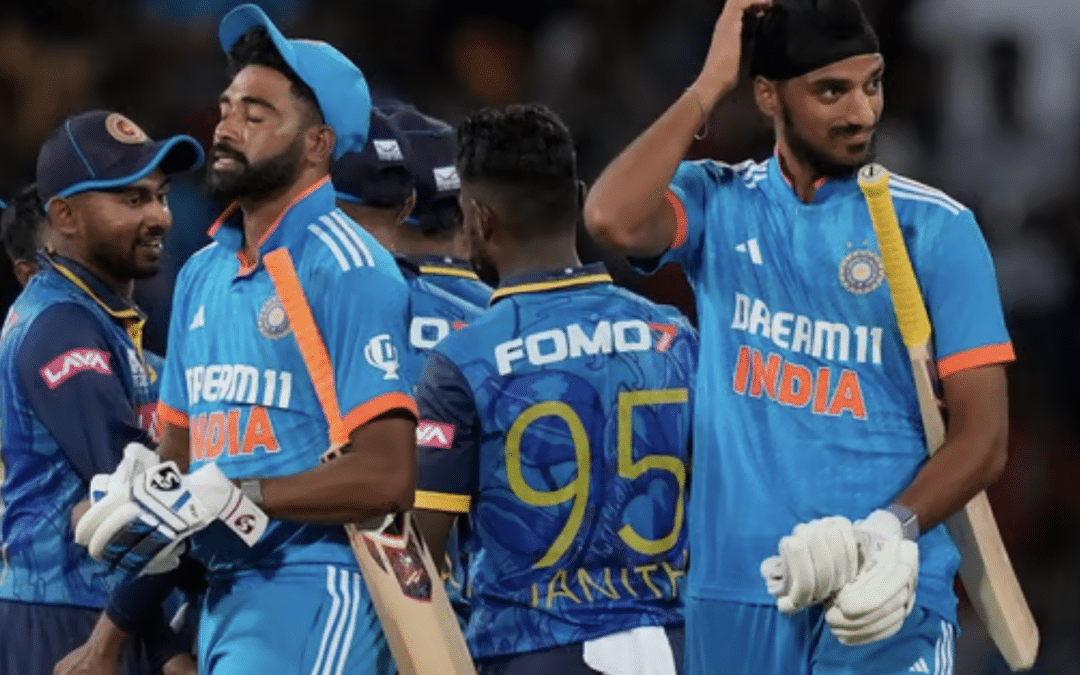Cricket is an immensely popular bat-and-ball game that boasts over 2 billion fans worldwide, making it one of the most followed sports globally. Let’s briefly introduce the rules.
The game of cricket – its rules, how cricket is played, and the playing field The history of this sport dates back to the 16th century, specifically to Southeast England. Two centuries later, cricket became England’s national sport, and by the mid-19th century, the first international match was played. Currently, cricket is the national sport in India and Pakistan, but it is also played in England, Australia, and South Africa.
For cricket betting, many betting agencies are great options, but the best bonuses and free spins can be obtained here. Betbolt is the on of the best betting companies focus on cricket.
Two teams of 11 players each compete against each other. The game is played on an oval field, with a rectangular strip in the middle measuring 22 yards (20.12 meters) in length. The bowler throws a cricket ball towards the batsman, who tries to hit it beyond the reach of the fielders to score by running to the other end of the strip. The team batting tries to score as many points as possible through hits, while the team bowling and fielding tries to prevent scoring and get the batsman out. After 6 throws (an over), the bowling team changes the bowler, who then bowls from the opposite end.
Cricket – the ball, wicket, bat, and scoring An essential part of cricket, like in football or hockey, is the wickets, located at each end of the central strip. They consist of three wooden stumps with two bails resting on top. If the bowler manages to knock down the opposite wicket, it means the batsman is out. “Out” can also occur if the ball is caught directly from the air by a fielder. If not caught, the batsman tries to score by running to the other end of the strip. This run, although potentially scoring one or more points, risks the batsman being out if the field players retrieve the ball and knock down the bails before the batsman reaches the line. An umpire stands on each side of the strip.
The match is divided into innings – during which one team fields and the other bats. After the innings, the roles switch. An innings ends when 10 of the 11 batsmen are out. The match ends when the first team has completed all its innings on bat, and the second team has scored more points. Cricket matches can also end in a draw, which is much more likely than in MMA fights or other combat sports.
Cricket is a team bat-and-ball sport where two teams of eleven players compete. It is played on an oval field, at the center of which is a rectangular strip (pitch) 22 yards (20.12 meters) long. Cricket is pursued by 120 million players in many countries, making it the second most popular team sport globally. The bowler throws the cricket ball towards the batsman, who tries to hit it beyond the fielders’ reach to score by running to the other end of the strip. Batsmen remain in play until they are out. The batting team continues until ten batsmen have been dismissed or until the bowlers complete a pre-determined number of overs. Then, the teams swap roles – the fielding team goes to bat. Professional cricket matches can range from 20 overs per side to a Test match played over five days. The earliest mentions of cricket date back to the 16th century or earlier. By the end of the 18th century, cricket became the national sport of England. The expansion of the British Empire also spread cricket, and the first international match was played in the mid-19th century. The game is most popular in Australasia, England, the Indian subcontinent, the Caribbean, and South Africa. The International Cricket Council (ICC), founded on June 15, 1909, unites national cricket federations. The CEO of this sports association is Dave Richardson, with headquarters in the United Arab Emirates. The ICC is a member of the Association of the IOC Recognised International Sports Federations (ARISF), and cricket is an IOC-recognized sport.
Rules and Principles:
The core principle of the game is that the team at bat tries to score as many runs as possible through hits, while the team that is bowling and fielding attempts to prevent scoring and dismiss the batsmen. The objective is to score more points than the opponent. In some cricket formats, it’s also crucial to dismiss all of the opposing batsmen, otherwise, the match could end in a draw.
A cricket match is divided into innings. During an inning, one team is in the field, and the other team is batting. After an inning concludes, the teams switch roles. Eleven players from the fielding team spread out across the field, whereas only two batsmen from the batting team are on the field at any given time. The batting order is usually announced before the match begins but can change during the game.
The cricket field is oval-shaped, with a rectangular strip in the middle. The boundary of the field is typically marked by a rope, fence, or paint.
At each end of the strip, 22 yards (20.12 meters) apart, is a wooden target known as the wicket. The strip is defined by white lines: the bowling crease for the bowler and the batting/popping crease for the batsmen, which are 4 yards (3.66 meters) from the wicket. The wicket is made of three wooden stumps topped with two bails. The wicket is considered down if at least one of the bails is dislodged. Thus, if the ball touches the wicket but the bails remain in place, the batsman is not out.
Each of the two batsmen is associated with one wicket (usually the one closer to them). Except when actively batting, they face no danger behind the batting line. If the wicket is destroyed while the batsman is running to the other end of the strip, they are out. Only one batsman can be dismissed per delivery.
Both batsmen take positions at opposite ends of the strip. A designated player from the fielding team, the bowler, throws the ball from the other side of the strip towards the batting batsman. The batsman not currently batting is called the non-striker and stands next to the wicket. This player may step beyond their line, but it’s not without risk. Another player from the fielding team, the wicketkeeper, stands behind the wicket of the active batsman.
The remaining nine fielders are strategically positioned across the field, outside the central strip. The fielding team’s captain continuously changes their positions according to the game’s development.
An umpire stands on each side of the strip.
The bowler usually retreats a few meters behind the wicket, runs up, and releases the ball from an extended arm overhead at the moment he steps on the line. If he commits a foot fault or bends his arm during the delivery, his attempt is deemed invalid (no ball), and the batting team automatically gains one point. The same applies if the ball goes beyond the batsman’s reach (wide). The ball can be bowled so that it bounces off the ground within the strip, lands directly on the line (a yorker), or flies through the air directly at the wicket (a full toss).
The batsman aims to protect his wicket by hitting the balls with the bat (which includes a handle and gloves). If the bowler succeeds in knocking down the wicket, the batsman is bowled out. If the batsman misses the ball but any other part of his body prevents the wicket from being knocked down, he is dismissed under the leg before wicket (LBW) rule.
A batsman can also be dismissed if he hits the ball and a fielder catches it directly from the air (caught out). If the bowler catches the ball, it’s termed caught and bowled, and if the wicketkeeper catches it, it’s caught behind.
When batsmen successfully hit the ball and it is not caught directly from the air, they may attempt to score runs for their team. They run to the opposite end of the strip, touching the line with the bat. For each completed run, they earn one point. They may attempt one run, multiple runs, or choose not to run at all. An attempt to run carries the risk of being dismissed. This occurs when fielders retrieve the ball and knock down the bails before the batsmen reach the line. This method of dismissal is called a run-out. Therefore, batsmen often start a run but then decide to return to their original position.
If a batsman hits the ball in the air beyond the boundary of the field, his team scores six points. If the ball touches the ground before leaving the field, it counts as a four-run hit. Batsmen may begin to run before the ball leaves the field, but these runs are not counted.
If the batsman fails to hit the ball, he can still attempt to score runs by running.
If the batsman leaves his line and misses the ball, the wicketkeeper can catch it and break his wicket (stumped).
In the case of a no ball or a wide ball, the batsman may choose to hit the ball and score extra points. In such a case, he can only be dismissed if he fails to make it back to the line in time (run out).
When batsmen decide to stop running, the ball is declared dead and is returned to the bowler. It becomes live again when the bowler begins his run-up for a new delivery. Regardless of any change in the batsmen’s positions, the bowler continues to bowl at the same wicket throughout an over.
The dismissed batsman leaves the field and is replaced by a new batsman from his team. However, even if the bowler visibly knocks down the wicket, the batsman is not actually out until the fielding team appeals to the umpire, traditionally phrased as “How’s that” or “Howzat.”
After six deliveries, an over, the bowling team changes the bowler, who bowls from the opposite wicket than his predecessor. An inning comes to an end when 10 out of 11 batsmen have been dismissed (all out), with always one batsman remaining “not out.” Another variant for the ending of an inning is when a pre-determined number of overs have been played or when the batting team declares they have scored enough points from their perspective.
The match ends when all innings have been played. In case of bad weather, the umpires can also call off the match. However, in many cases, the match ends when the first team has completed all its batting innings, and the second team in the sequence has achieved a higher number of points. In matches played over four innings, the second team may not need to start its second innings if it has more points, known as a win by an innings. If the second team has not completed its last inning but has more points and still has five batsmen who did not get to play, it is said to have won by five wickets. If the last team batting is losing, all batsmen are dismissed, and the team is ten points behind, then the winning team has won by ten runs. If both teams play all their innings and end with the same number of points, it is a tie.
In four-innings matches, there’s another possibility for a draw when the team with fewer points at the end of the last day still has at least two batsmen in play. This significantly impacts strategy. Teams often declare they have scored enough points to have time to dismiss all the opposing batsmen. The risk, of course, is that this may not be achieved, and the other team instead secures the necessary points for their victory.
Clothing and Equipment:
The wicketkeeper and batsmen wear protective gear due to the hardness of the ball, which can be thrown at speeds greater than 145 km/h, posing a health and safety risk. Protective clothing includes pads designed to protect knees and shins, batting gloves or wicketkeeping gloves, a helmet for head protection, and a groin guard. Some batsmen wear additional padding inside their clothing, such as padded trousers, rib protectors, or shoulder guards. The only players allowed to wear protective gear are those in close proximity to the batsman (i.e., next to or in front of him), but they may not wear gloves or external leg guards.





